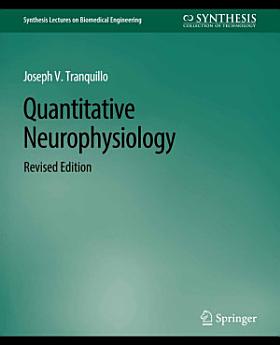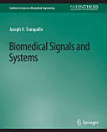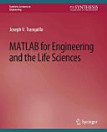Quantitative Neurophysiology
Jun 2022 · Springer Nature
Ebook
144
Pages
reportRatings and reviews aren’t verified Learn More
About this ebook
Quantitative Neurophysiology is supplementary text for a junior or senior level course in neuroengineering. It may also serve as an quick-start for graduate students in engineering, physics or neuroscience as well as for faculty interested in becoming familiar with the basics of quantitative neuroscience. The first chapter is a review of the structure of the neuron and anatomy of the brain. Chapters 2-6 derive the theory of active and passive membranes, electrical propagation in axons and dendrites and the dynamics of the synapse. Chapter 7 is an introduction to modeling networks of neurons and artificial neural networks. Chapter 8 and 9 address the recording and decoding of extracellular potentials. The final chapter has descriptions of a number of more advanced or new topics in neuroengineering. Throughout the text, vocabulary is introduced which will enable students to read more advanced literature and communicate with other scientists and engineers working in the neurosciences. Numerical methods are outlined so students with programming knowledge can implement the models presented in the text. Analogies are used to clarify topics and reinforce key concepts. Finally, homework and simulation problems are available at the end of each chapter. Table of Contents: Preface / Neural Anatomy / Passive Membranes / Active Membranes / Propagation / Neural Branches / Synapses / Networks of Neurons / Extracellular Recording and Stimulation / The Neural Code / Applications / Biography / Index
About the author
Joseph Tranquillo is an associate professor of biomedical engineering at Bucknell University where he has been a faculty member since 2005. He received his Doctor of Philosophy degree in biomedical engineering from Duke University (Durham, NC) and Bachelor of Science degree in engineering from Trinity College (Hartford, CT). His teaching interests are in biomedical signals and systems, neural and cardiac electrophysiology, and medical device design. Nationally Joe has published or presented over 40 peer reviewed or invited works in the field of engineering education. He was the founder and inaugural chair of the Undergraduate Research Track at the Biomedical Engineering Society (BMES) conference, co-organized the Biomedical Engineering Body-Of-Knowledge Summit and currently serves on the board of the Biomedical Engineering Division of the American Society of Engineering Education (ASEE). He is the winner of the 2010 National ASEE Biomedical Engineering Teaching Award. His technical research interests are in non-linear dynamics in the heart and brain. He has over 50 publications and presentations, and he has authored a textbook, Quantitative Neurophysiology. He is a member of the Biomedical Engineering Society, IEEE Engineering in Medicine and Biology Society, American Physical Society and is an elected member of Sigma Xi and Heart Rhythm. When not teaching or doing research, he enjoys improvisational dance and music, running trail marathons, backpacking, brewing Belgian beers, and raising his two children Laura and Paul.
Rate this ebook
Tell us what you think.
Reading information
Smartphones and tablets
Install the Google Play Books app for Android and iPad/iPhone. It syncs automatically with your account and allows you to read online or offline wherever you are.
Laptops and computers
You can listen to audiobooks purchased on Google Play using your computer's web browser.
eReaders and other devices
To read on e-ink devices like Kobo eReaders, you'll need to download a file and transfer it to your device. Follow the detailed Help Center instructions to transfer the files to supported eReaders.





